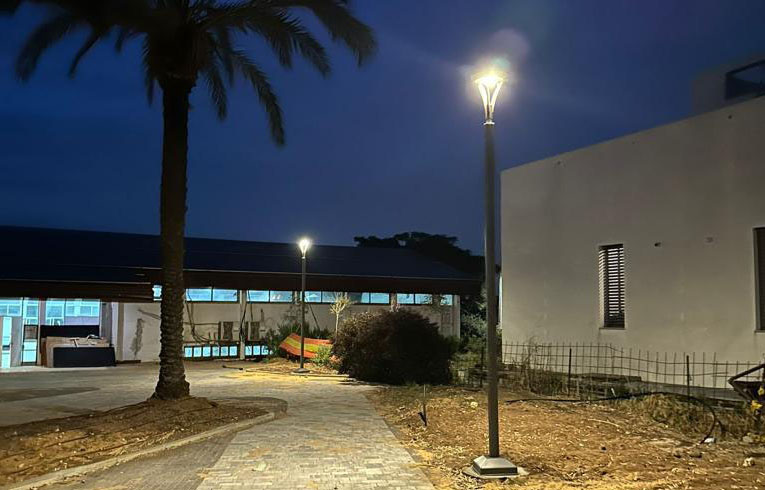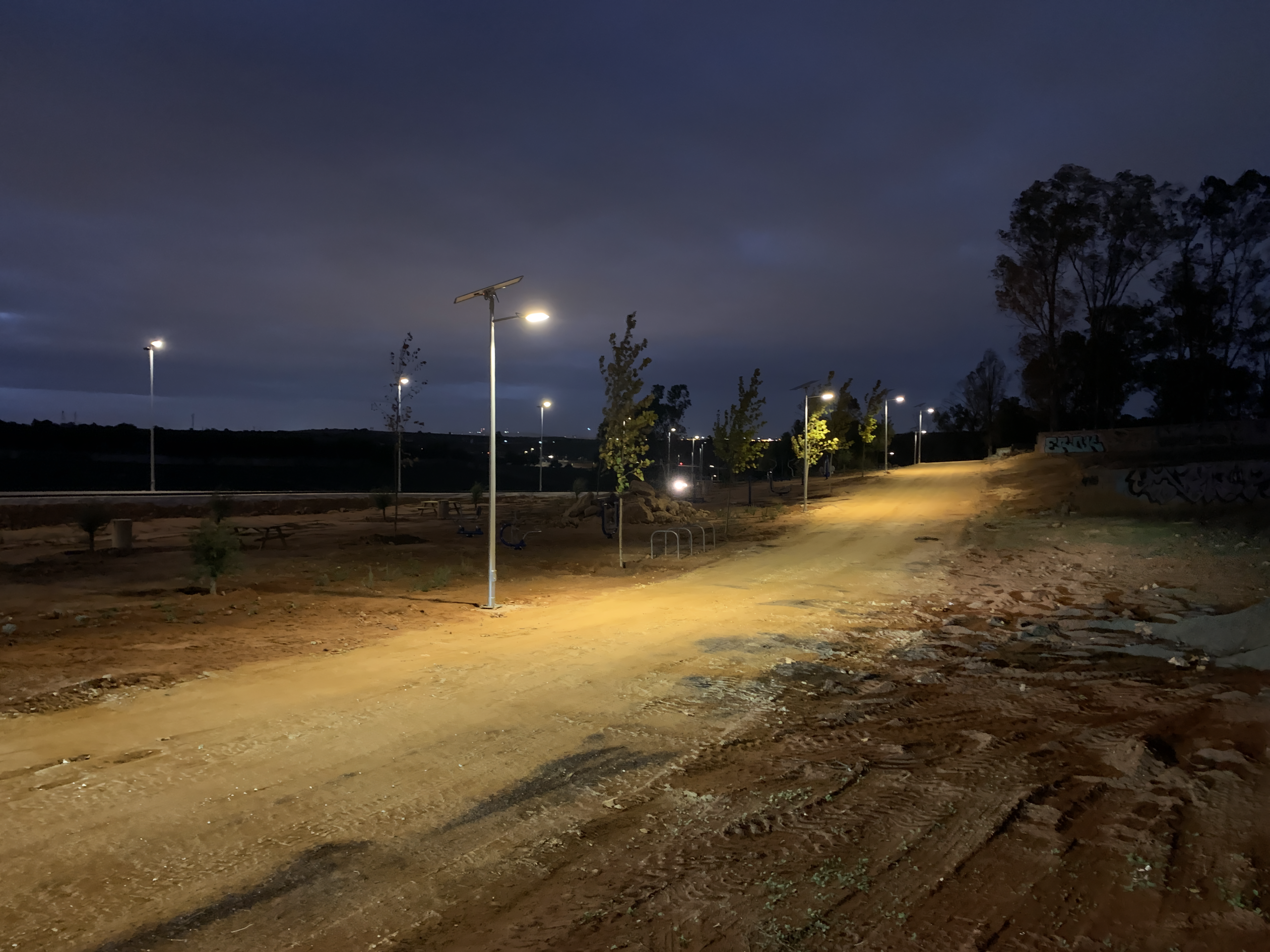For dealers looking to expand their solar light product offerings, understanding how much sunlight is necessary for the lights to function properly is of utmost importance. Having a firm grasp on what intensity and duration of sunlight will keep your customers’ solar lights functioning optimally is essential for successful sales.
In this blog post we will discuss the various components that factor into how much sunlight a solar light needs, such as location, energy efficiency calculations, seasonal changes in daylight hours and more. By exploring these aspects of successful solar light operation you can help provide advice to your customers along with maximized performance from their chosen products!
The Basics of Solar Lights
1. Solar Panel: This is the key component that captures sunlight and converts it into electricity. The panels are typically made up of photovoltaic cells which generate a flow of electrons when they are exposed to sunlight.
2. Battery: The electricity generated by the solar panel is stored in a rechargeable battery. This battery powers the light when it gets dark. The capacity of the battery will determine how long the light can stay on during the night.
3. Light Source: Most solar lights use LED bulbs due to their energy efficiency and long lifespan. The brightness of the light is determined by the number of lumens the bulb produces.
4. Controller: This component regulates the power that flows between the solar panel, the battery, and the light. It protects the battery from overcharging during the day and also triggers the light to turn on when it gets dark.
5. Light Sensor or Photocell: This sensor detects changes in ambient light. When the sun sets, the sensor signals the controller to switch on the light. Similarly, at dawn, the sensor signals the controller to switch off the light and start charging the battery again.
6. Casing and Mounting: The components are usually housed in a weather-resistant casing to protect them from environmental elements. The lights can be mounted on poles for street lighting, embedded into the ground for pathway lighting, or hung from structures for decorative purposes.

How Much Sunlight is Required for a Solar Light to Operate Properly?
Enhance your solar lights’ efficiency with these expert tips. Experience up to 15 hours of illumination after just 6-8 hours of direct sunlight. But even on cloudy days, fear not! Your solar lights can still charge, although at a slower rate. Maximize their power potential by strategically positioning the solar panels for optimal sunlight absorption. We recommend facing them south in the northern hemisphere and north in the southern hemisphere. Remember, these are general guidelines, so check the manufacturer’s instructions for best results.
Different Levels of Output from Solar Lights
1. Low Output (1-100 Lumens): These are typically used for accent lighting or pathway markers. They provide a soft light that is often used in gardens, along walkways, or to highlight landscape features.
2. Medium Output (100-500 Lumens): Solar lights with this level of output are suitable for general landscape and garden lighting. They’re bright enough to illuminate small areas like the steps on a deck or a flagpole.
3. High Output (500-1000 Lumens): This level of output is often found in motion-sensor security lights and some types of solar street lights. They’re bright enough to illuminate larger areas like driveways, patios, or small yards.
4. Very High Output (1000+ Lumens): Solar lights with very high lumen output are typically used for commercial purposes, such as parking lots, large yard areas, or street lighting for roads. These lights provide bright, powerful illumination over a wide area.
The output of a solar light is not only determined by its lumen rating but also by the efficiency of its solar panel and battery capacity. A high-quality solar panel and larger battery will allow the light to operate at a higher output for a longer period.

Factors that Affect Solar Light Efficiency
1. Sunlight Exposure: The amount and intensity of sunlight that the solar panel receives directly impacts its efficiency. Solar lights need about 6-8 hours of direct sunlight for a full charge. Shaded areas, cloudy weather, or shorter daylight hours in winter can reduce the amount of sunlight the panel receives, thus affecting its efficiency.
2. Placement and Positioning: The direction in which the solar panel faces is crucial for optimal sunlight absorption. In the Northern hemisphere, panels should face south, and in the Southern hemisphere, they should face north. The tilt angle of the panel can also affect its exposure to sunlight and may need to be adjusted based on your geographical location and the time of year.
3. Battery Capacity: The capacity and quality of the battery also play a significant role in solar light efficiency. A battery with a larger capacity can store more energy, allowing the light to operate for longer periods.
4. Quality of Components: The efficiency of a solar light is also dependent on the quality of its components, including the photovoltaic cells in the solar panel, the LED bulbs, and the circuitry. Higher quality components generally lead to better and more reliable performance.
5. Maintenance: Regular cleaning of the solar panel can also affect its efficiency. Dust, dirt, and debris can block sunlight and reduce the panel’s ability to generate electricity.
6. Temperature: Extreme temperatures can impact the efficiency of solar lights. While solar panels perform well in warm conditions, very high temperatures can actually reduce their efficiency. Cold temperatures, on the other hand, can affect battery performance.
What to Look for When Purchasing a Solar Light
When purchasing a solar light, you’ll want to consider several key factors to ensure you choose a product that will meet your needs and provide reliable, efficient performance. Here are some things to look out for:
1. Brightness Level (Lumens): The brightness of a solar light is measured in lumens. Decide how bright you want your lights to be based on their intended use. For example, accent lights may only need a low lumen count, while security lights should have a high lumen count.
2. Quality: Look for lights made with high-quality materials for durability and longevity. Check the quality of the solar panel, battery, LED bulbs, and the casing.
3. Ease of Installation: Most solar lights are easy to install, but it’s still something to consider. Some models simply stake into the ground, while others may need to be mounted onto a wall or post.
4. Battery Durability: The battery life is crucial as it determines how long the light can operate once it gets dark. Look for lights with long-lasting, rechargeable batteries.
5. Solar Panel Efficiency: The efficiency of the solar panel determines how effectively it can convert sunlight into electricity. High-efficiency panels will charge the battery faster and more fully.
6. Weather Resistance: Since solar lights are typically used outdoors, they should be able to withstand various weather conditions. Look for lights that are waterproof and can endure extreme temperatures.
7. Automatic Features: Many solar lights come with features like automatic on/off triggered by a light sensor, or motion detection for security lights.
8. Maintenance: Consider what kind of maintenance the solar light will require. Can parts like batteries and bulbs be easily replaced?
9. Aesthetics: Of course, you’ll also want to consider the design and aesthetics of the solar light and how it fits with your outdoor decor.

Tips on Placing Your Solar Lights to Maximize Sunlight Exposure
To get the most out of your solar lights and ensure they function optimally, it’s essential to place them strategically so they receive maximum sunlight exposure. Here are some tips:
1. Direct Sunlight: Place your solar lights where they can receive direct sunlight for the majority of the day. Avoid shaded areas where buildings, trees, or other objects might block sunlight.
2. Optimal Orientation: In the Northern hemisphere, solar panels should generally face south, and in the Southern hemisphere, they should face north. This positioning allows the panels to capture sunlight most effectively as the sun moves across the sky.
3. Tilt Angle: The angle at which the solar panel is tilted can also affect its sunlight exposure. You may need to adjust the tilt angle depending on the time of year and your specific geographical location.
4. Avoid Obstructions: Make sure your solar lights are not placed near light obstructions like bushes, garden decorations, or structures that could cast shadows on the solar panel, especially during peak sun hours.
5. Spacing: If you’re installing multiple solar lights, space them out adequately to prevent them from casting shadows on each other.
6. Use Solar Pathfinder: A Solar Pathfinder is a tool that helps determine the optimal place for solar panel installation by mapping out the sun’s path across the sky.
7. Regular Maintenance: Keep the solar panels clean. Dust, dirt, and debris on the panel can block sunlight and reduce the panel’s ability to charge the battery.
Conclusion
Solar lights can be a great and interesting way to light up your outdoor spaces. Now that you’ve got through the basics of solar lights, you should have a good idea on how much sunlight is required for proper operation, the different levels of output, and even what factors can affect its efficiency. When shopping around for a solar light, knowing what to look for will come in handy to help purchase the best product for your needs. Lastly, take advantage of being able to place them however you like in order to maximize its sunlight exposure.
It’s an easy option that doesn’t require any extra wiring or extensive installation works! If you need additional guidance or more insight into options about solar lighting products, don’t hesitate! Contact our knowledgeable product managers here at SRESKY and they’ll be glad to provide further assistance with choosing prouducts plus professional sourcing solutions so that you can get the most from your purchase.
Table of Contents